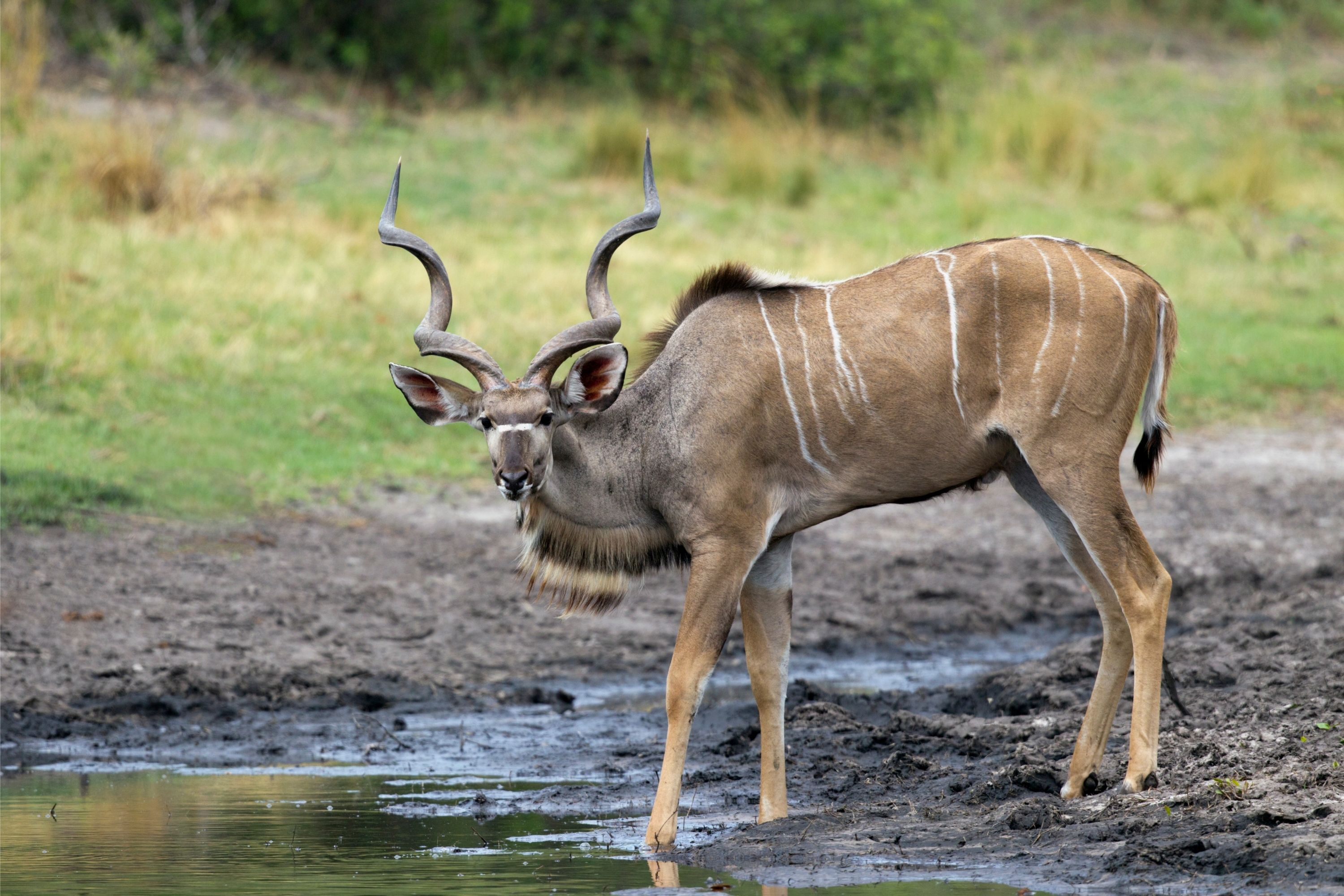Greater kudu
(Tragelaphus strepsiceros)

Description
The greater kudu (Tragelaphus strepsiceros) is a woodland antelope found throughout eastern and southern Africa. Despite occupying such widespread territory, they are sparsely populated in most areas due to declining habitat, deforestation, and poaching.The greater kudu is one of two species commonly known as kudu, the other being the lesser kudu, T. imberbis. Greater kudus have a narrow body with long legs, and their coats can range from brown/bluish grey to reddish brown. They possess between 4 and 12 vertical white stripes along their torso. The head tends to be darker in colour than the rest of the body, and exhibits a small white chevron which runs between the eyes. Greater kudu bulls tend to be much larger than the cows, and vocalize much more, utilizing low grunts, clucks, humming, and gasping. The bulls also have beards running along their throats, and large horns with two and a half twists, which, were they to be straightened, would reach an average length of 120 cm (47 in), with the record being 187.64 cm (73.87 in). They diverge slightly as they slant back from the head. The horns do not begin to grow until the bull is between the ages of 6–12 months. The horns form the first spiral rotation at around 2 years of age, and not reaching the full two and a half rotations until they are 6 years old; occasionally they may even have 3 full turns. The range of the greater kudu extends from the east in Ethiopia, Tanzania, Eritrea and Kenya into the south where they are found in Zambia, Angola, Namibia, Botswana, Zimbabwe and South Africa. Other regions where greater kudu are located are Central African Republic, Chad, Democratic Republic of the Congo, Djibouti, Malawi, Mozambique, Somalia, Swaziland, and Uganda They have also been introduced in small numbers into New Mexico, but were never released into the wild. Their habitat includes mixed scrub woodlands (the greater kudu is one of the few largest mammals that prefer living in settled areas – in scrub woodland and bush on abandoned fields and degraded pastures, mopane bush and acacia in lowlands, hills and mountains.They will occasionally venture onto plains only if there is a large abundance of bushes, but normally avoid such open areas to avoid becoming an easy target for their predators. Their diet consists of leaves, grass, shoots and occasionally tubers, roots and fruit (they are especially fond of oranges and tangerines)
Taxonomic tree:







